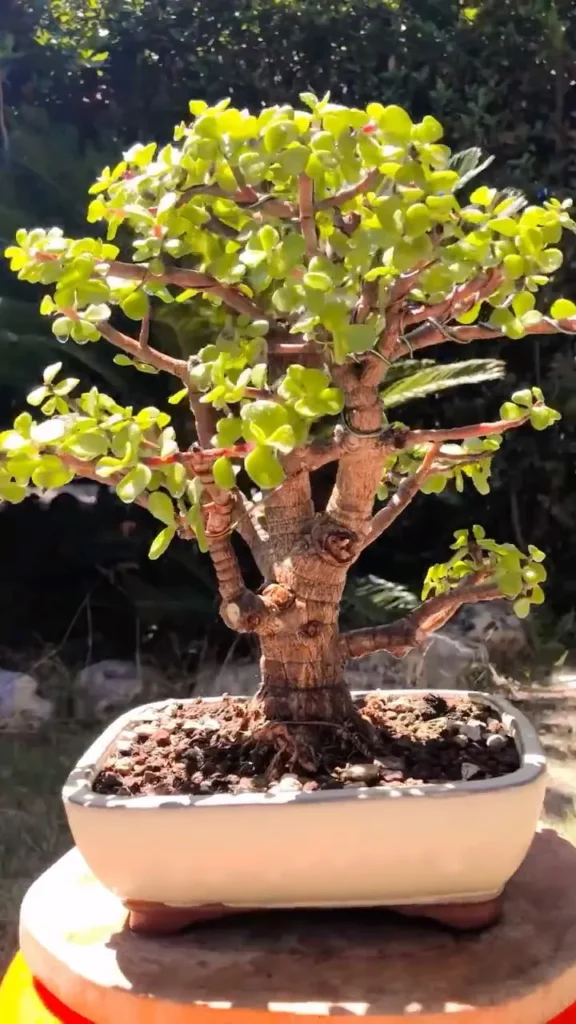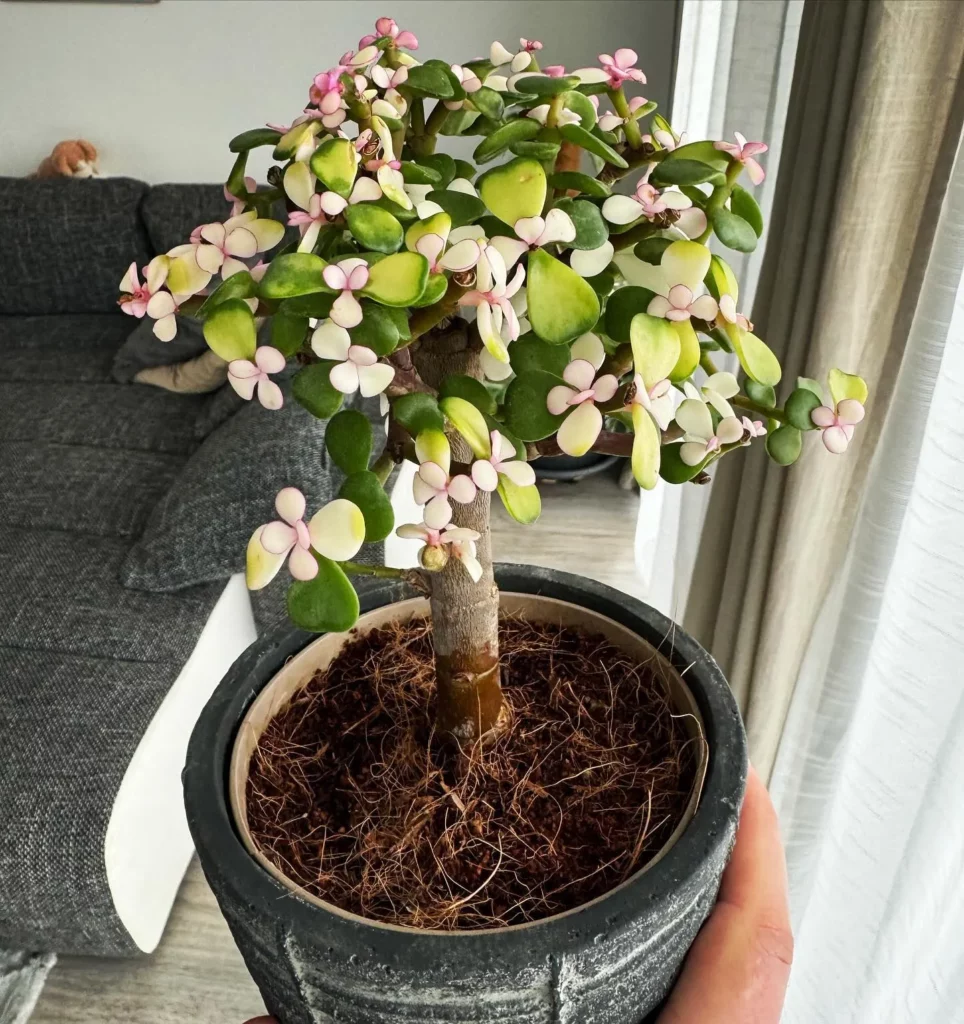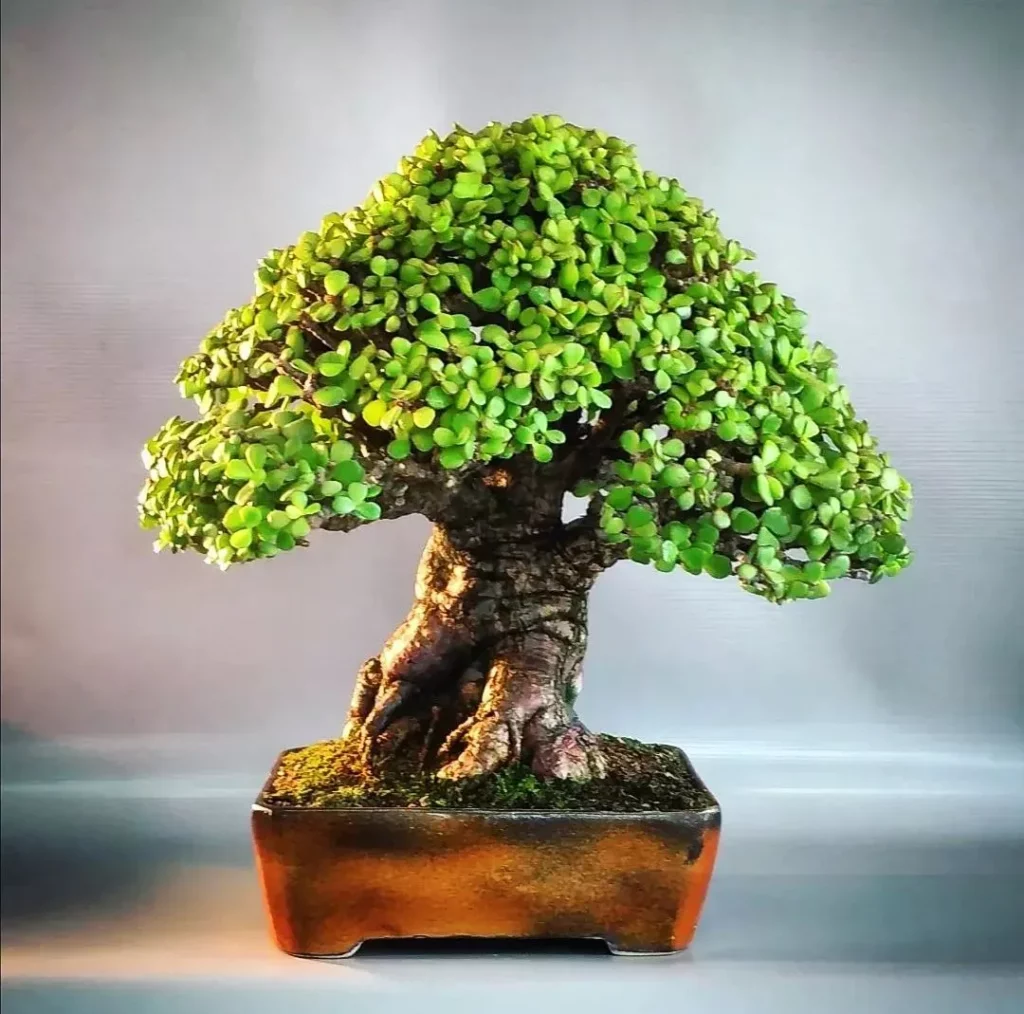I want to talk to you about a common issue that many jade bonsai tree owners face: leaf drop. If you’ve noticed the leaves on your beautiful jade plant falling off, don’t worry, you’re not alone. Leaf drop in Jade Bonsai can be caused by several factors: soil conditions, improper fertilization, and a poor drainage system.
Pest Infestation and Diseases



Jade bonsai plants are beautiful and popular succulents that can brighten up any space. However, they are not immune to pest infestation and diseases, which can lead to leaf drop and poor overall health. It is important to be vigilant and proactive in protecting your jade plant from these threats.
Pest Infestation
Mealybugs, scale insects, and spider mites are common pests that can attack jade plants. These pests feed on the plant’s sap, causing damage to the leaves and stems. If left untreated, they can multiply rapidly and spread to other plants in the vicinity.
Regularly inspect your jade plant for signs of pests, such as white cottony masses (mealybugs), tiny brown or gray bumps (scale insects), or fine webbing (spider mites).
If you notice any of these signs, take immediate action to address the infestation. Here’s how to easily solve any pest issues:
- Gently wipe off mealybugs with a cotton swab soaked in rubbing alcohol.
- Remove scale insects manually or with a small brush.
- For spider mites, spray the plant with a solution of water and insecticidal soap.
Repeat these treatments as necessary to eliminate the pests. Additionally, isolate infested plants to prevent the pests from spreading to other plants.
Diseases
Root rot is a common disease that can affect jade plants. It is caused by overwatering, which leads to the roots becoming waterlogged and deprived of oxygen. This condition creates a favorable environment for harmful fungi to thrive, ultimately damaging the roots and causing leaf drop.
To prevent root rot, ensure that your jade plant is potted in well-draining soil and a container with drainage holes. Only water the plant when the top inch of soil feels dry, and avoid allowing water to accumulate in the saucer or tray beneath the pot.
Changing Temperatures



Fluctuating temperatures can have a significant impact on the health of jade plants, potentially leading to leaf drop. To ensure the well-being of your jade plant, it’s important to understand its temperature requirements. Jade plants thrive in temperatures ranging from 54 to 74°F (13 to 23°C). When exposed to extreme cold or hot temperatures, your jade plant may experience stress and a loss of leaves.
To prevent leaf drop due to temperature stress, protect your jade plant from freezing temperatures. If you live in a region with cold winters, consider moving your jade plant indoors during the colder months or providing it with adequate insulation. Similarly, in hot climates, providing shade or using sunshades can help shield your jade plant from direct sunlight and excessive heat.
Natural Leaf Shedding and Growth
Like any plant, jade plants naturally shed older leaves as they grow new ones. This natural process of leaf shedding and growth is normal and should not be a cause for concern. Seasonal changes, environmental factors, and other unknown factors can contribute to leaf shedding. It’s important to recognize when leaf drop is part of the natural growth cycle of the plant and not a result of stress or poor health.

During the growth process, jade plants divert their resources towards developing new leaves and branches. As they do so, older leaves naturally turn yellow or brown, wither, and eventually drop off. This is a sign that the plant is actively growing and renewing itself.
To distinguish between natural leaf shedding and a problem with the plant’s health, you can pay attention to the following signs:
- Yellowing or browning of multiple leaves at a time
- Wilting or drooping of the stems
- Thinning and sparse foliage
- Discolored spots or lesions on the leaves
If you observe these signs along with leaf drop, it may indicate an underlying issue that needs to be addressed, such as overwatering, pests, nutrient deficiencies, or disease.

Importance of Proper Light Conditions
To ensure your jade plant gets the right amount of light, consider placing it in a location with adequate light, such as in front of a south-facing window. This will provide the plant with the optimal light conditions it needs to thrive.



Light is essential for plants as it fuels the process of photosynthesis, which is crucial for their growth and overall health. Without proper light conditions, your jade plant may struggle to produce energy and nutrients, resulting in weak leaves that eventually drop.
Importance of Good Drainage System
Poor drainage can lead to a host of problems, including overwatering, root rot, and leaf drop. It’s essential to ensure that excess water can effectively drain away from the roots, preventing waterlogged soil that can suffocate the plant.
To improve the drainage system, consider repotting your jade plant in a pot with better drainage capabilities. Look for pots with drainage holes at the bottom to allow excess water to escape. Additionally, you can add drainage holes to an existing pot if it doesn’t have any. This will help create an optimal environment for the roots, reducing the risk of issues caused by poor drainage.
An adequate drainage system aids in maintaining the right moisture levels in the soil, preventing overwatering and subsequent root rot. It also ensures that water and nutrients reach the roots effectively, supporting healthy growth and minimizing the risk of leaf drop.
Preventing Leaf Drop in Indoor Jade Bonsai Trees
As an indoor jade bonsai tree enthusiast, I understand the importance of keeping these delicate plants healthy and vibrant. To prevent leaf drop and ensure the well-being of your indoor jade bonsai trees, there are a few key factors to consider.
- Proper Watering: Finding the right balance when it comes to watering is crucial. Overwatering can lead to root rot and leaf drop, while underwatering can cause stress and result in the same outcome. Check the moisture level of the soil regularly and water only when the top inch feels dry. Allow the soil to dry out completely between waterings to maintain optimal moisture levels.
- Light Conditions: Jade bonsai trees thrive in bright, indirect light. Placing your tree near a window that receives adequate sunlight, but avoiding direct sunlight, can help prevent sunburn and weak foliage. Consider using sheer curtains or blinds to filter the light and create the perfect environment for your indoor jade bonsai tree to flourish.
- Good Drainage: To prevent overwatering and root rot, it’s essential to have a well-draining soil and proper drainage system. Opt for a bonsai-specific well-draining soil mix, or mix regular potting soil with perlite or sand to improve drainage. Additionally, ensure that the pot has drainage holes to allow excess water to escape. This will help maintain a healthy root system and prevent leaf drop.
By following these steps and providing the right care, you can enjoy a thriving indoor jade bonsai tree that retains its beautiful foliage. Remember to monitor the plant regularly, keep a close eye on its watering needs, and make adjustments as necessary to maintain optimal conditions.
Preventing Leaf Drop in Outdoor Jade Bonsai Trees
Proper care is essential to prevent leaf drop in outdoor jade bonsai trees. By following these tips, you can maintain the health and beauty of your outdoor bonsai:
- Monitor the watering needs of your jade bonsai tree, especially during dry periods. Ensure the soil is well-drained to prevent overwatering and root rot.
- Choose a suitable location for your bonsai tree, providing the right amount of sunlight. Protect it from extreme temperatures to prevent sunburn and temperature stress.
- Regularly inspect your outdoor bonsai tree for signs of pests and diseases. Early detection and treatment can help prevent leaf drop and preserve the overall health of the tree.
Conclusion
To prevent leaf drop, it’s crucial to water your jade bonsai tree correctly. Providing adequate amounts of water while allowing the soil to dry out between waterings is key. Additionally, ensuring your bonsai tree is placed in a location with the right amount of light is important. Keeping it away from direct sunlight and providing bright, indirect light will prevent sunburn and maintain strong foliage.
Using well-draining soil and ensuring a good drainage system are also vital in preventing leaf drop. This helps avoid overwatering and root rot, which can weaken the overall health of your bonsai tree. Regularly inspecting your tree for pest infestation and diseases and taking appropriate action will further promote healthy foliage and minimize leaf drop.
FAQ
What are the common reasons for jade plant leaf drop?
The common reasons for jade plant leaf drop include underwatering and overwatering, sunburn, poor light conditions, poor soil conditions, pests, changing temperatures, natural leaf shedding, and a poor drainage system.
How does underwatering affect jade plants?
Underwatering can cause jade plant leaves to lose grip and eventually fall off. It’s important to find the right balance and only water the jade plant when the soil is dry.
Can overwatering cause leaf drop in jade plants?
Yes, overwatering can cause leaf drop in jade plants. It can lead to root rot, which affects the overall health of the plant. It’s essential to water the jade plant correctly and ensure the soil has good drainage.
How does sunburn affect jade plants?
Exposure to too much direct sunlight can cause jade plant leaves to turn red or brown and eventually fall off. Placing the jade plant in a location with the right amount of light and avoiding direct sunlight can prevent sunburn.
What are the consequences of poor light conditions for jade plants?
Poor light conditions, such as insufficient bright, indirect light, can lead to weak foliage and leaf drop. Jade plants require bright, indirect light to thrive.
How do poor soil conditions contribute to leaf drop in jade plants?
Poor soil conditions, such as dense or sandy potting soil, can affect the plant’s ability to absorb nutrients properly, leading to weak foliage and leaf drop. Adding perlite, sand, peat moss, or compost can improve soil drainage and nutrient absorption.
Why is fertilization important for jade plants?
Proper fertilization is important for the growth and health of jade plants. Using balanced nutrients or plant food during the growing season can prevent nutrient deficiencies and promote healthy foliage.
How can pests and diseases cause leaf drop in jade plants?
Jade plants are susceptible to pests such as mealybugs, scale insects, and spider mites, which can cause leaf drop. Additionally, root rot caused by overwatering can lead to leaf drop. Regular inspection and prompt treatment can prevent further damage.
How do changing temperatures affect jade plants?
Fluctuating temperatures can stress jade plants and lead to leaf drop. Extreme cold or hot temperatures can affect the plant’s overall development. Protecting the plant from freezing temperatures and providing a stable temperature environment can prevent leaf drop due to temperature stress.
Is it normal for jade plants to naturally shed leaves?
Yes, like any plant, jade plants naturally shed older leaves as they grow new ones. This natural process of leaf shedding and growth is normal and should not be a cause for concern.
Why is proper light conditions crucial for jade plants?
Proper light conditions are crucial for the health and foliage of jade plants. They require bright, indirect light to thrive. Insufficient light can lead to weak foliage and leaf drop.
Why is a good drainage system essential for jade plants?
A good drainage system is vital for the health of jade plants. Poor drainage can lead to overwatering, root rot, and leaf drop. Ensuring the potting soil allows excess water to drain away and repotting in a pot with better drainage can improve the overall health of the plant.
How can leaf drop be prevented in indoor jade bonsai trees?
To prevent leaf drop in indoor jade bonsai trees, maintain proper watering, light conditions, and drainage. Finding the right balance of watering and allowing the soil to dry out between waterings is crucial. Providing bright, indirect light and using well-draining soil can also help prevent leaf drop.
How can leaf drop be prevented in outdoor jade bonsai trees?
To prevent leaf drop in outdoor jade bonsai trees, monitor watering needs and use well-draining soil to prevent overwatering and root rot. Placing the tree in a location with the right amount of sunlight and protecting it from extreme temperatures can also help prevent leaf drop. Regular inspection for pests and diseases is recommended as well.





